
Oxfordshire is a ceremonial county in South East England. The county is bordered by Northamptonshire and Warwickshire to the north, Buckinghamshire to the east, Berkshire to the south, and Wiltshire and Gloucestershire to the west. The largest settlement is the city of Oxford.
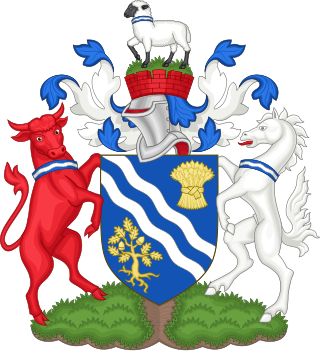
Oxfordshire County Council is the county council for the non-metropolitan county of Oxfordshire in the South East of England. Established in 1889, it is an elected body responsible for most strategic local government services in the county.
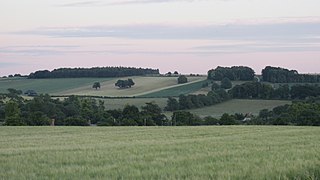
The Vale of White Horse is a local government district of Oxfordshire in England. It was historically a north-west projection of Berkshire. The area is commonly referred to as the 'Vale of the White Horse'. It is crossed by the Ridgeway National Trail in its far south, across the North Wessex Downs AONB at the junction of four counties. The northern boundary is defined by the River Thames. The name refers to Uffington White Horse, a prehistoric hill figure.

Oxford West and Abingdon is a constituency represented in the House of Commons of the UK Parliament since 2017 by Layla Moran, a Liberal Democrat.

Wantage is a constituency in Oxfordshire represented in the House of Commons of the Parliament of the United Kingdom by Conservative MP David Johnston.
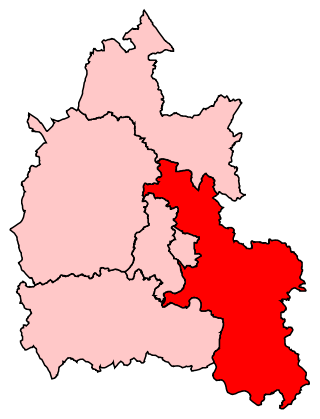
Henley is a constituency in Oxfordshire represented in the House of Commons of the UK Parliament since 2008 by John Howell, a Member of Parliament from the Conservative Party.
South Oxfordshire District Council, a non-metropolitan district council in Oxfordshire, England is elected every four years.
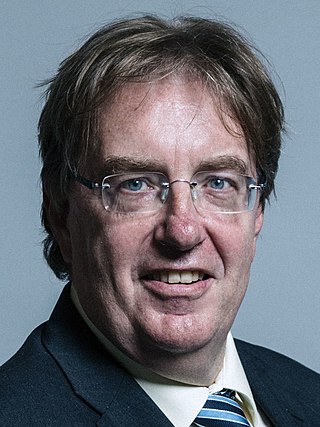
The 2008 Henley by-election to elect a member of the House of Commons for the constituency of Henley in Oxfordshire was held on 26 June 2008. It followed the election of Boris Johnson as Mayor of London in May 2008. In order to resign from being an MP, Johnson accepted the post of Steward and Bailiff of the Manor of Northstead on 4 June 2008.
The 2003 South Oxfordshire District Council election took place on 1 May 2003 to elect members of South Oxfordshire District Council, a non-metropolitan district council in Oxfordshire, England. This was part of the wider 2003 UK local elections. The whole council was up for election with boundary changes since the last election in 1999 reducing the number of seats by 2. The Conservative Party gained overall control of the council from no overall control.

An election to Oxfordshire County Council took place on 2 May 2013 as part of the 2013 United Kingdom local elections. 63 councillors were elected from 61 electoral divisions, which returned either one or two county councillors each by first-past-the-post voting for a four-year term of office. Following a boundary review, the electoral divisions were not the same as those used at the previous election in 2009. The election saw the Conservative Party lose overall control of the council as the party found itself one seat short of an overall majority.

The 2015 South Oxfordshire District Council election was held on 7 May 2015 to elect members of South Oxfordshire District Council in England. This was on the same day as other local elections.
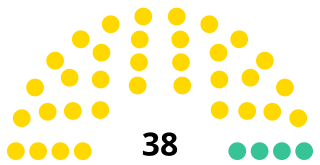
Vale of White Horse District Council is the local authority for the Vale of White Horse, a non-metropolitan district in the south-west of Oxfordshire, England, that was created on 1 April 1974.

The 2017 Oxfordshire County Council election took place on 4 May 2017 as part of the 2017 local elections in the United Kingdom. All 63 councillors were elected from 61 electoral divisions which returned either one or two county councillors each by first-past-the-post voting for a four-year term of office.

The 2011 South Oxfordshire District Council election was held on 5 May 2011 to elect members of South Oxfordshire District Council in England. This was on the same day as other local elections.

The 2021 Oxfordshire County Council election took place on 6 May 2021 alongside the other local elections. All 63 seats of the Oxfordshire County Council were contested. The council is composed of 61 divisions, each electing either one or two councillors, all elected by FPTP.

The 2023 South Oxfordshire District Council election took place on 4 May 2023 to elect members of South Oxfordshire District Council in Oxfordshire, England. This was on the same day as other local elections across England.





















